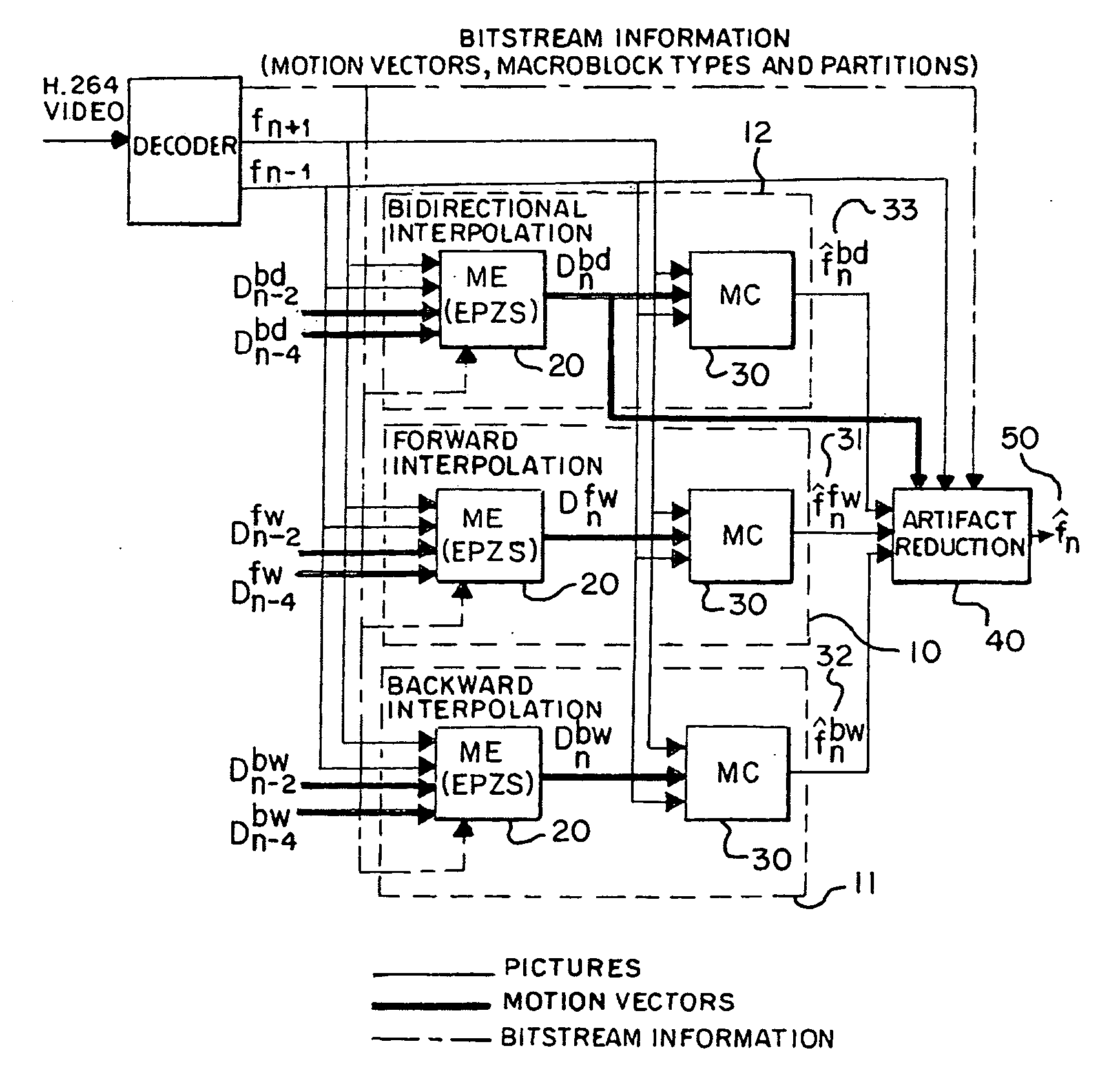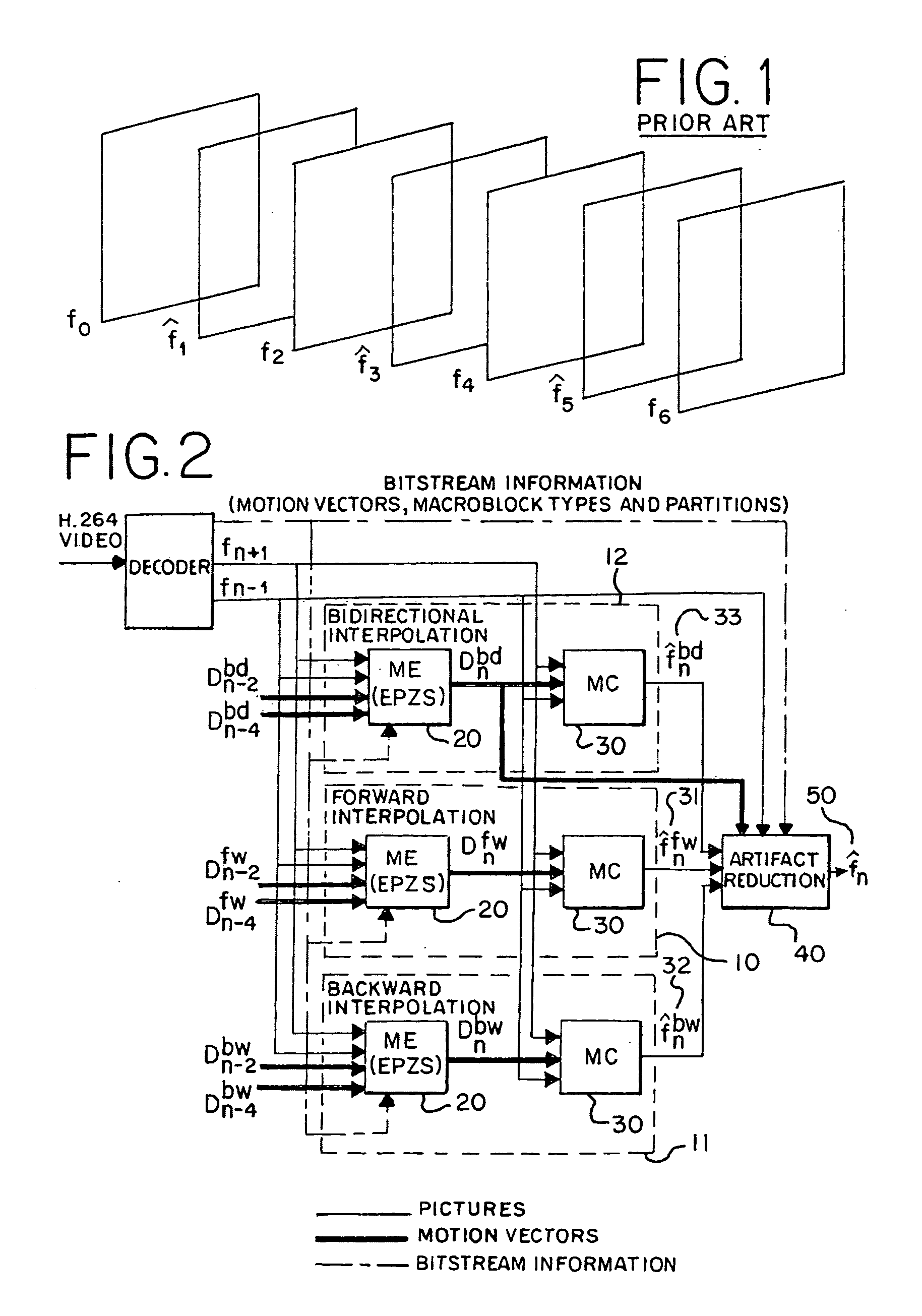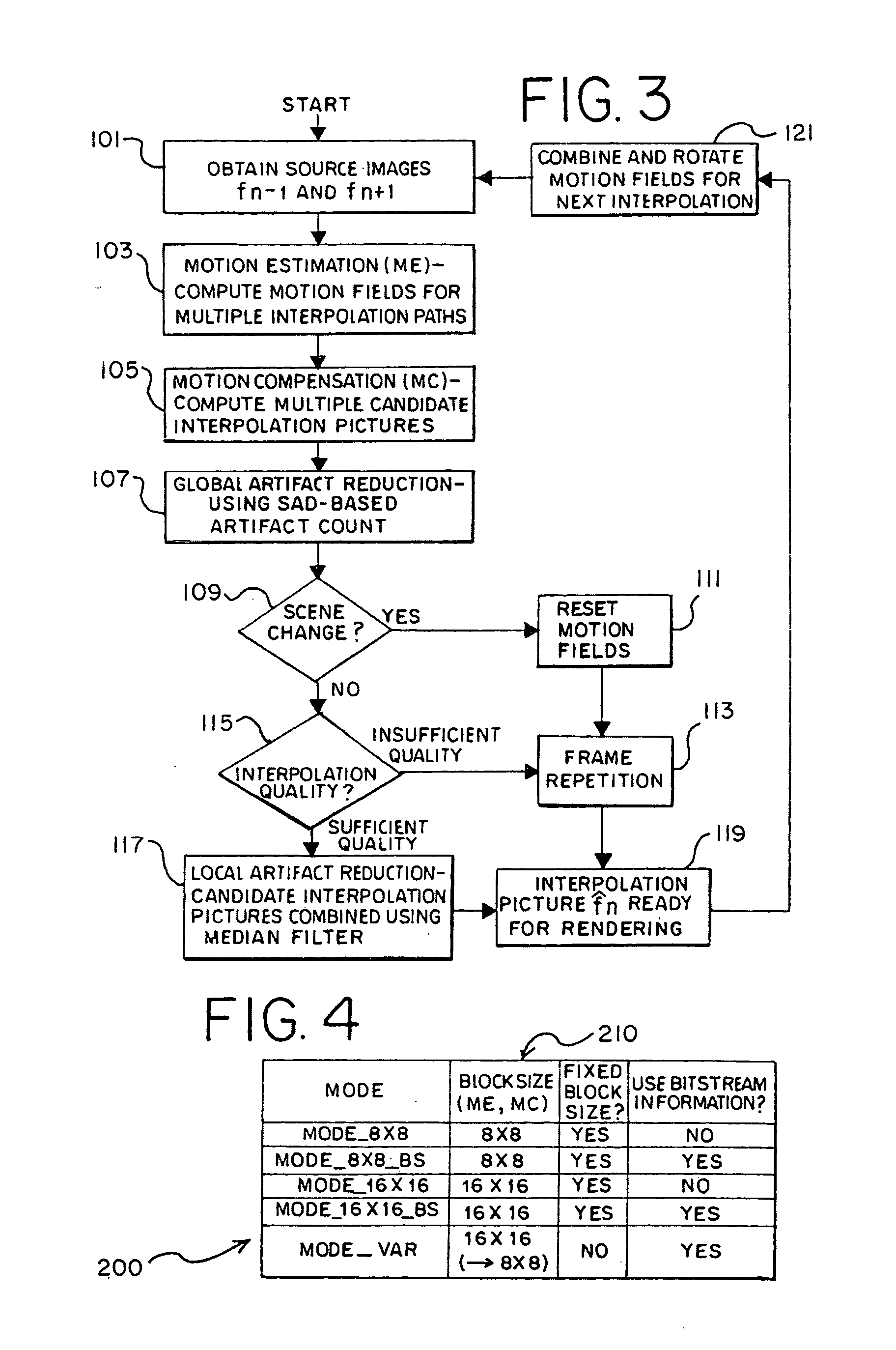System and method for frame interpolation for a compressed video bitstream
a video bitstream and frame interpolation technology, applied in the field of system and a method for interpolating video frames for compressed video bitstreams, can solve the problems of loss of some video data, loss of spatial resolution of video frames, and/or a reduction of the number of video frames displayed per second, so as to reduce the computation required for interpolating video frames and improve interpolation quality. , the effect of improving the interpolation quality
- Summary
- Abstract
- Description
- Claims
- Application Information
AI Technical Summary
Benefits of technology
Problems solved by technology
Method used
Image
Examples
Embodiment Construction
[0057]The present invention generally relates to a system and a method for frame interpolation for a compressed video bitstream. More specifically, the present invention relates to a system and a method for frame interpolation for a compressed video bitstream that combine candidate frames to generate an interpolated frame inserted between two original video frames. The system and the method for frame interpolation for a compressed video bitstream may employ three interpolation paths, namely a bidirectional interpolation path, a forward interpolation path and a backward interpolation path.
[0058]Referring now to the drawings wherein like numerals refer to like parts, FIG. 2 generally illustrates an embodiment of a method 9 for frame interpolation for a compressed video bitstream. A system and / or the method 9 may utilize a forward interpolation path 10, a backward interpolation path 11 and a bidirectional interpolation path 12 (collectively hereinafter “the interpolation paths 10-12”)....
PUM
 Login to View More
Login to View More Abstract
Description
Claims
Application Information
 Login to View More
Login to View More - R&D
- Intellectual Property
- Life Sciences
- Materials
- Tech Scout
- Unparalleled Data Quality
- Higher Quality Content
- 60% Fewer Hallucinations
Browse by: Latest US Patents, China's latest patents, Technical Efficacy Thesaurus, Application Domain, Technology Topic, Popular Technical Reports.
© 2025 PatSnap. All rights reserved.Legal|Privacy policy|Modern Slavery Act Transparency Statement|Sitemap|About US| Contact US: help@patsnap.com



